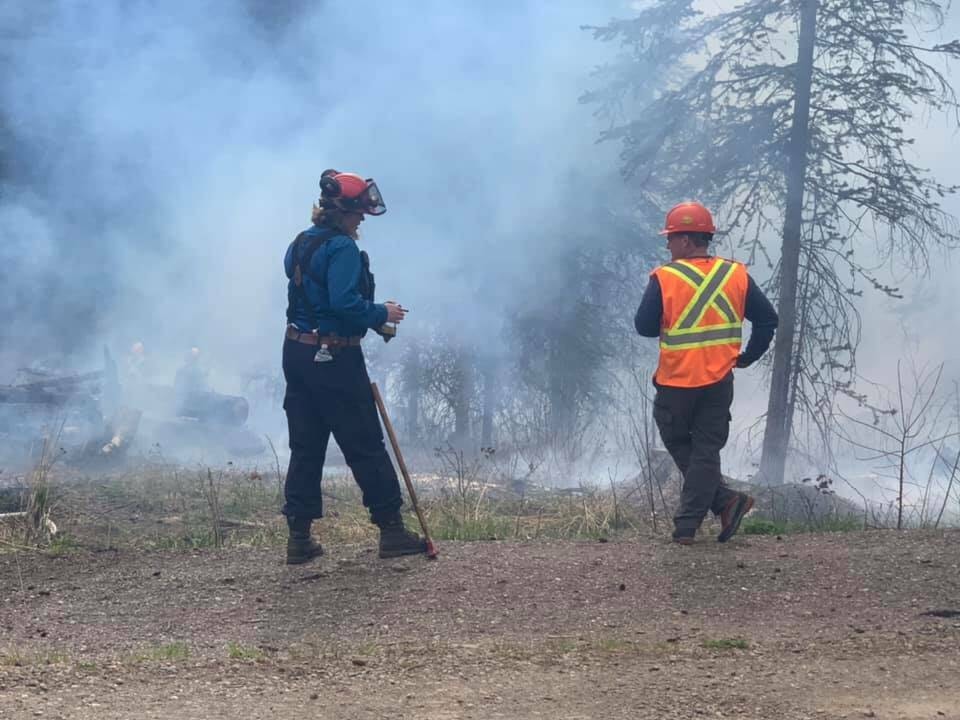The heat is coming from the sky, so the concern turns naturally to the heat that might come across the ground. Wildfires are burning early and often across B.C. and northern Alberta.
The Northwest Fire Centre (NWFC) is one of the largest wildfire jurisdictions in Western Canada, so it is inevitable that big blazes are going to happen. The firefighters’ challenge is to be ready for action stationed across a district the size of the United Kingdom.
“The Nadina Zone office based in Burns Lake has one 22-person Unit Crew as well as three three-person Initial Attack crews,” said Morgan Blois, communications specialist with the NWFC.
Increasingly, air support is used to battle B.C. wildfires. There is a fleet of waterbombers based in Kamloops, plus a smattering across the province of helicopters equipped with buckets and heavy aircraft that drop the muddy red fire retardant where needed. Blois explained how Burns Lake factors into the use of those airborne assets.
“Aircraft work on a contract-based agreement with BC Wildfire Service,” said Blois. “Some of these contracts are still being finalized for the season. However, given the anticipated change in weather, as things begin to warm, aircraft will become available to support fire suppression efforts across the Northwest Fire Centre region if needed.
“Currently we have two machines on call for the Nadina Zone, one located in Burns Lake and the other in Houston,” Blois added. “There is a water tender and dozer (heavy equipment) that will be on call for the entire Nadina Zone region.
Skimmers (waterbombers) and airtankers (retardant) are provincial resources that are deployed in a priority sequence across the province. They will be available for the remainder of the summer/fall to support in fire response when needed.”
The NWFC headquarters is located in Smithers. From there they coordinate the wildfire response for an area that covers over 25-million hectares - a quarter of the province. The district stretches from the west coast to just west of Endako and from the Yukon border to Tweedsmuir Provincial Park.
According to BC Wildfire Service, the Northwest Fire Centre encompasses part of the undulating interior plateau as well as the rugged Coastal mountain range. The forests in this area consist primarily of pine and spruce trees. Balsam can also be found in higher elevations with hemlock and red cedar becoming more prevalent along the coast.
The dead standing pines left behind by the mountain pine beetle disaster, as well as partially burned stands of timber from past fires, affect the hydrology of the Lakes District, if not adding fuel to the potential for major fires.
